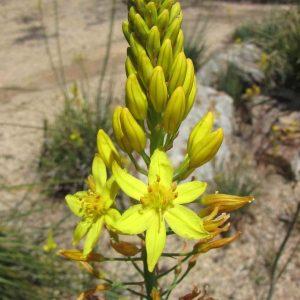Description
Why to Grow Gumbi Gumbi?
Gumbi gumbi is a very hardy plant. It survives our clay pit in scorching heat, it is not eaten by kangaroos or deer, it grows in sandy soil and under a mock-orange tree with its impenetrable root system.
The plants are sold in forestry tubes. Gumbi gumbi prefers to be planted out while still small so that their fast growing roots can expand.
Gumbi gumbi is a very potent native herb and all parts of the plant have been used. While the orange fruit are terribly bitter and not eaten as food the tea of the leaves reportedly has many health benefits. Some herbalists recommend the tea for general health and well-being, digestive disorders, chronic fatigue, skin disorders, immune conditions, depression, emphysema and more severe illnesses, however, you need to always seek the advice of a trained practitioner!
Gumbi gumbi is native in all states of Australia except Tasmania and in the Northern Territory. Although it is widespread, it does occur in low numbers.
How to Grow Gumbi gumbi
Drought and frost hardy tree to 10 meters. Gumbi-Gumbi likes full-sun to part shade and well-drained soils. There are reports that gumbi gumbi even survives hard clay soils, but it definitively prefers sandy or volcanic soils.
Gumbi gumbi is a tough plant and can grow in competition with other plants and even under a gum tree!
Gumbi Gumbi grows in warm temperate and subtropical climate, however I had a small tree growing and surviving in Katoomba!
Gumbi gumbi can be grown in pots.
Other names:
Native Apricot, Weeping Pittosoporum, Native Willow
The previous Latin name was Pittosporum phylliroides


Reviews
There are no reviews yet.